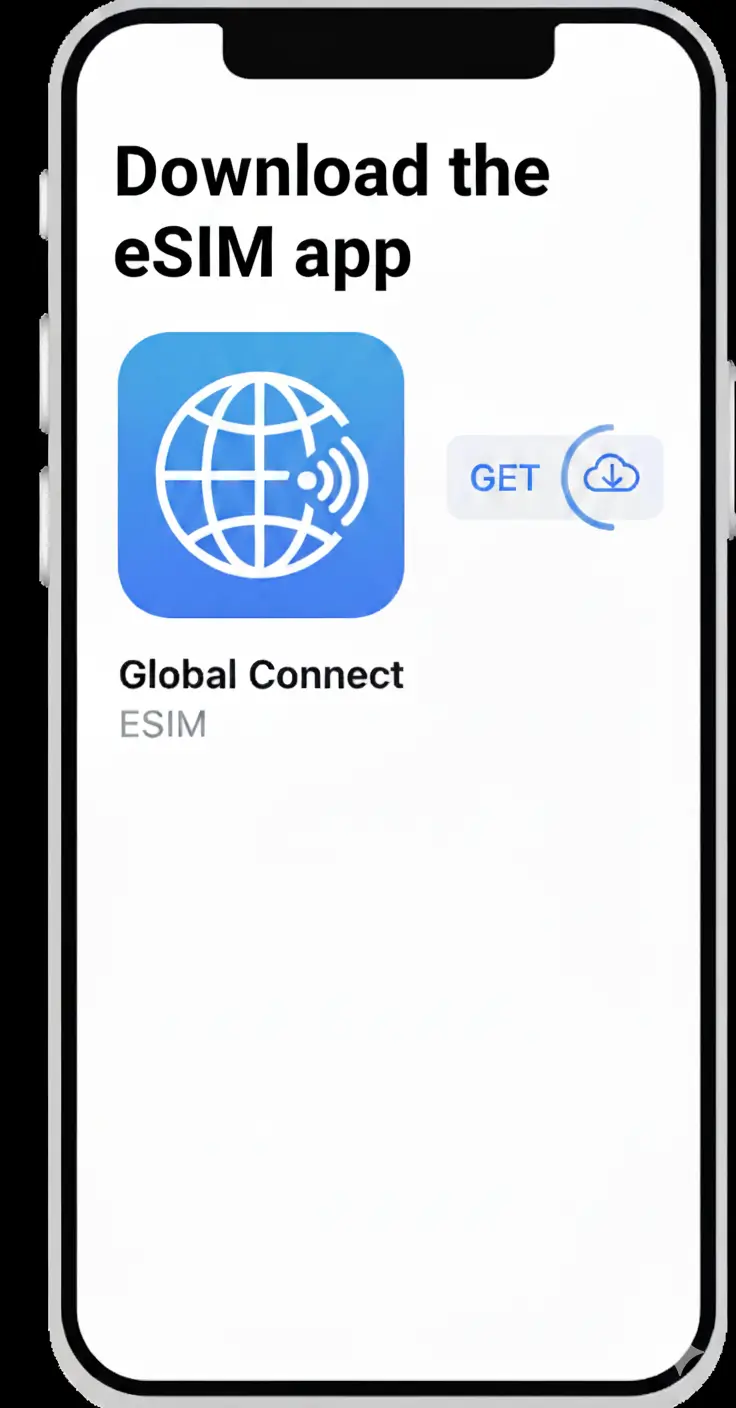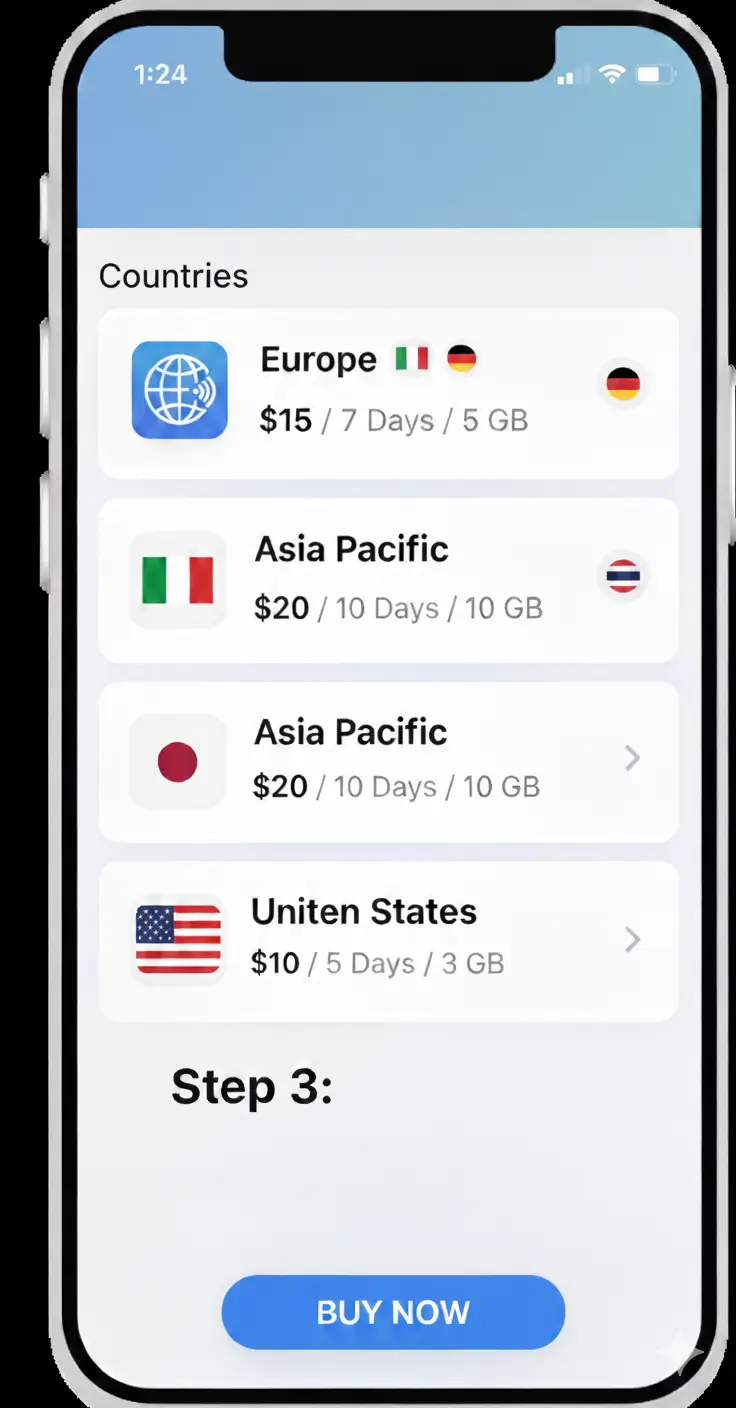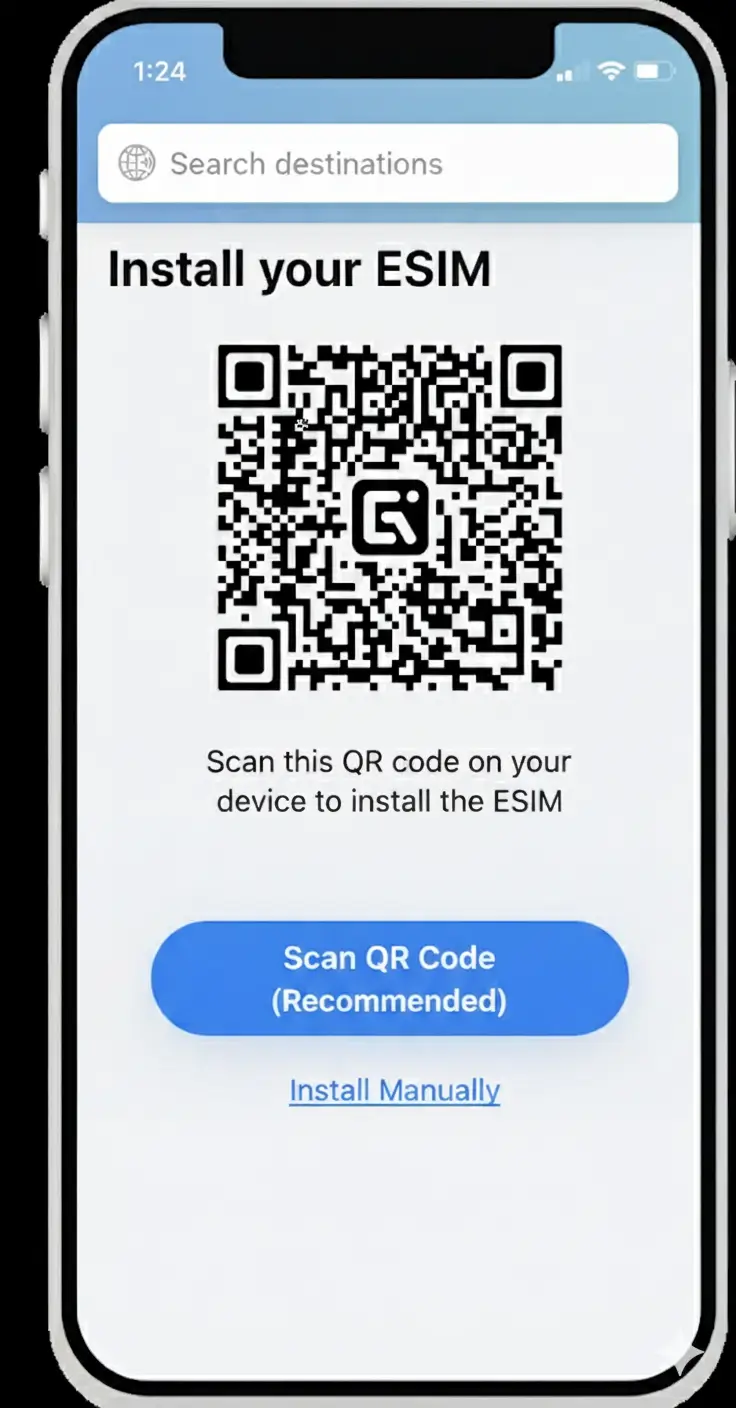Description
eSim Plans
FAQ
An eSIM, or embedded SIM, is a digital SIM card that is built directly into your device’s hardware (like a chip soldered to the motherboard) by the manufacturer. It functions exactly like a traditional physical SIM card—it identifies you to your network—but you don’t need to physically insert or swap a plastic chip.
Feature | eSIM | Physical SIM |
Form | Digital chip embedded in the device. | Removable plastic card (Nano, Micro, etc.). |
Installation | Digital download and activation (usually via a QR code or app). | Manual insertion into a SIM tray. |
Swapping | Easy to switch between plans/carriers digitally. | Requires physically swapping the plastic card. |
Space | Takes up less internal space in a device. | Requires a SIM slot and tray. |
An eSIM profile is the collection of data (including your phone number, network access information, etc.) that is securely downloaded and stored on the embedded eSIM chip. This profile is what connects your device to the mobile network
Yes, eSIMs are highly secure. Since they are embedded and cannot be physically removed, they offer an extra layer of security against SIM-swapping fraud and theft. The digital process uses strong encryption for activation and management.
Most newer flagship smartphones, tablets, and smartwatches are eSIM-compatible. This includes most Apple iPhones (XR, XS, and newer), Google Pixel devices (Pixel 3 and newer), and many Samsung Galaxy models (S20 and newer).
Always check your device’s settings or the manufacturer’s official specifications to confirm eSIM compatibility.
Check our >> e-SIM device compatibility page
Yes, if your device supports Dual SIM functionality (which most modern eSIM-compatible devices do), you can have both a physical SIM and an eSIM active simultaneously. This is ideal for using one number for personal use (on your physical SIM) and another for business or travel data (on your eSIM).
The number of stored profiles depends on your device. Most devices allow you to store multiple eSIM profiles (often 5 to 10 or more), but typically, only one or two eSIM profiles can be active at any given time (in addition to a physical SIM, if applicable).
It depends on the plan you purchase.
- Data-Only eSIMs (common for travel): These only provide mobile internet access. You can still make calls and send texts using internet-based apps (VoIP) like WhatsApp, FaceTime, or Skype.
- Full-Service eSIMs: If purchased from a carrier as a replacement for your primary line, these usually include a phone number and support traditional calls and SMS.
Yes, but the process depends on your carrier and device. Many newer devices (especially iPhones and some Androids) support eSIM Quick Transfer which allows you to digitally move the profile from your old device to your new one without needing to contact customer support. Otherwise, you may need to contact us to deactivate the old profile and issue a new one for your new device.
The most common way to install an eSIM profile is by:
- Receiving an eSIM QR code via email after purchase.
- Going to your device’s Settings Cellular/Mobile Data Add Cellular Plan (or similar).
- Scanning the provided QR code with your phone’s camera.
- Following the on-screen prompts.
You can also use manual activation by entering the SM-DP+ Address and Activation Code, if the QR code is not working.
This depends on the specific plan you purchase.
- Immediate Activation: Some plans activate the moment you install the eSIM.
- Activation on Connection: Most travel data plans activate only when you connect to a supported network in the destination country.
Always check the specific activation details of your chosen plan.
If you delete an eSIM profile, you cannot simply re-scan the original QR code to reinstall it, as the code is typically a one-time use token. You must contact our customer support with your order details to have a replacement eSIM profile issued to you.
For most data-only eSIMs, especially those purchased for travel, yes, you must enable Data Roaming for the eSIM line in your phone’s settings for the plan to work outside of your home network. Since these are pre-paid plans, this does not typically result in extra roaming charges, but it is necessary for the eSIM to connect to the local partner network.










